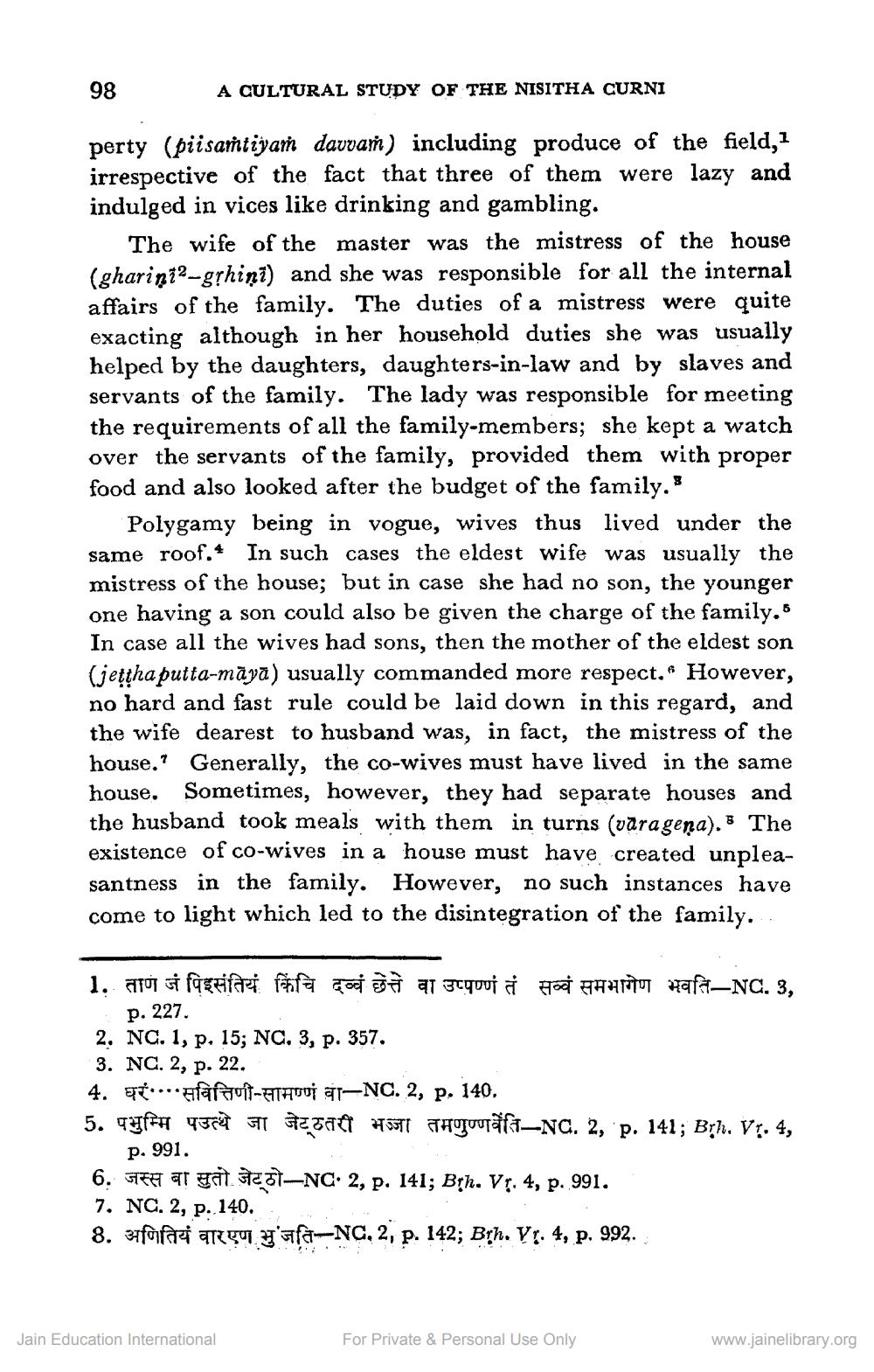________________
98
A CULTURAL STUDY OF THE NISITHA CURNI
perty (piisaṁtiyan davvan) including produce of the field, irrespective of the fact that three of them were lazy and indulged in vices like drinking and gambling.
The wife of the master was the mistress of the house (gharini2-gļhiņi) and she was responsible for all the internal affairs of the family. The duties of a mistress were quite exacting although in her household duties she was usually helped by the daughters, daughters-in-law and by slaves and servants of the family. The lady was responsible for meeting the requirements of all the family-members; she kept a watch over the servants of the family, provided them with proper food and also looked after the budget of the family,
Polygamy being in vogue, wives thus lived under the same roof.4 In such cases the eldest wife was usually the mistress of the house; but in case she had no son, the younger one having a son could also be given the charge of the family. In case all the wives had sons, then the mother of the eldest son (jettha putta-māyā) usually commanded more respect. * However, no hard and fast rule could be laid down in this regard, and the wife dearest to husband was, in fact, the mistress of the house.? Generally, the co-wives must have lived in the same house. Sometimes, however, they had separate houses and the husband took meals with them in turns (varageņa). The existence of co-wives in a house must have created unpleasantness in the family. However, no such instances have come to light which led to the disintegration of the family..
1. Aron ci fastifade fåtte cop að at geyoui di Hood AHTUT Hafi–NC. 3,
p. 227.
2. NC. 1, p. 15; NC. 3, p. 357. 3. NC. 2, p. 22. 4. ...alarauit-Athou ar-NC. 2, p. 140. 5. quff Tort he Tall 5977 Tagoraft-NC. 2, p. 141; Brh. Vr. 4,
p. 991. 6. har at EST-NC. 2, p. 141; Brh. Vr. 4, p. 991. 7. NC. 2, p. 140. 8. sfofasi aru yafa-NC. 2, p. 142; Brh. Vr. 4, p. 992.
Jain Education International
For Private & Personal Use Only
www.jainelibrary.org




